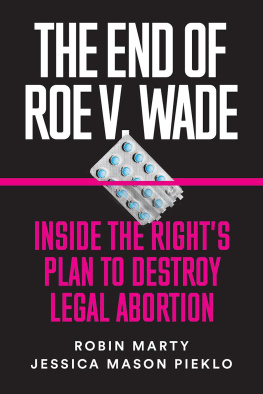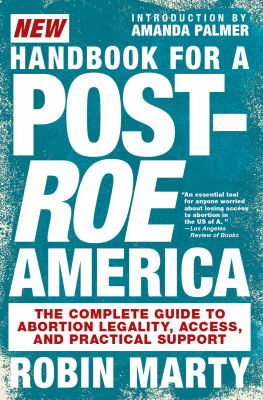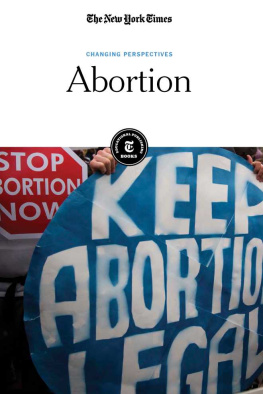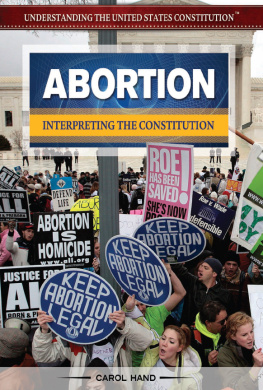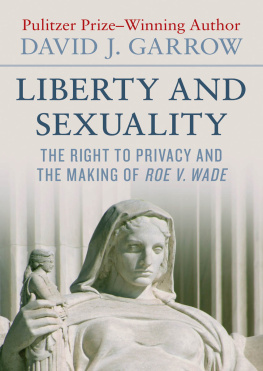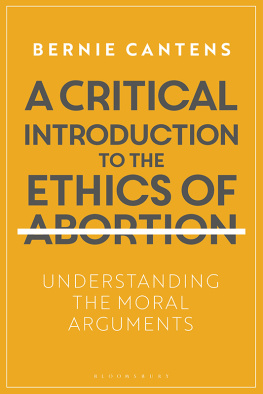The End of Roe v. Wade
Inside the Rights Plan to
Destroy Legal Abortion
Robin Marty
Jessica Mason Pieklo
New York, NY
Copyright 2019, 2013 by Robin Marty and Jessica Mason Pieklo.
All rights reserved.
Printed in the United States of America.
10 9 8 7 6 5 4 3 2 1
The End of Roe V. Wade is an updated edition of Crow After Roe, previously published by Ig Publishing in 2013.
No part of this book may be used or reproduced in any manner without written permission of the publisher. Please direct inquires to:
Ig Publishing
Box 2547
New York, NY 10163
www.igpub.com
ISBN: 978-1-632460-86-8 (ebook)
CONTENTS
Introduction
THE DAY THE END BEGAN
On June 27, 2018, there was no indication on that the abortion rights landscape was about to undergo a seismic shift to the right. That morning, the Supreme Court was finishing up another contentious term, releasing a decision undercutting the power of public sector unions to collect dues and using the First Amendment to justify its decision. Just the day before, the conservatives on the Court had upheld President Donald Trumps Muslim travel ban, and earlier in the month, had punted on resolving a case involving a Colorado baker who had refused to bake a cake for a same-sex couple because of a religious objection to marriage equality.
But with no abortion rights cases on the Courts docket for the following term, and still feeling optimistic about the previous years abortion rights win in Whole Womans Health v. Hellerstedt, pro-choice advocates turned their attention to challenging a fresh new wave of anti-abortion measures in the states. The ascendency of Donald Trump and Mike Pence to the presidency in 2016 had emboldened the religious right, who saw this as their moment to realize over forty years of grassroots and institutional advocacy to overturn Roe v. Wade. Yet as the Courts term came to a close that early summer day, anti-abortion forces didnt realize just how close they were to achieving their dream.
After the Court finished its business, the reports started coming in. Supreme Court Justice Anthony Kennedy, the Courts swing vote and the Justice widely believed to be the key vote to keeping Roe on the books, was retiring. President Trump, who had campaigned on a promise of only appointing Supreme Court justices intent on overturning Roe, would get to name Kennedys replacement.
And just like that, the pendulum on abortion rights had swung back sharply in the anti-abortion movements favor.
Liberty finds no refuge in a jurisprudence of doubt, wrote Justice Sandra Day OConnor in the opening of Planned Parenthood v. Casey, the 1992 abortion rights decision that would both re-affirm Roes holding that the right to an abortion is fundamental, and also adopt the undue burden standard for judging future abortion restrictions. The womans liberty is not so unlimited, however, that from the outset the State cannot show concern for the life of the unborn, and at a later point in the fetal development the States interest in life has sufficient force so that the right of the woman to terminate the pregnancy can be restricted, OConnors opinion in Casey continued. The undue burden formula in Casey shifted the Courts intellectual framework away from considering abortion to be a fundamental right upon which the State should carefully intrude, to abortion as a right that existed only in relation to the power of the state to regulate it.
Justice Anthony Kennedy was only in his fourth year on the Court when Casey was decided. A centrist from California, Kennedy had been appointed by President Ronald Reagan to replace the retired Justice Lewis F. Powell, Jr. Kennedy wasnt Reagans first choice; former Nixon Solicitor General and culture warrior Robert Bork was the presidents initial pick. Reagan, a conservative Republican, was a staunch opponent of abortion rights and his rise to the presidency opened a new era of political power for social conservatives. But it was Borks fierce, public opposition to abortion rights and civil rights that would doom his nomination and ultimately put Kennedy on the bench. Had Bork been confirmed, it is very likely that Casey would have been decided the other way, with Roe possibly being overturned within twenty years of having been decided in 1973. But instead it was Justice Kennedy joining OConnor to save Roe v. Wade, and abortion rights supporters breathed a sigh of reliefat least for a little while.
If OConnor had hoped her opinion in Casey would end the question of whether or not Roe was settled law, that hope could not have lasted long. Caseys undue burden framework gave anti-abortion advocates a new opening in their war on choice. Individual states were now free to test the limits of what constituted an undue burden on abortion rights.
And test the limits they have. In the last decade, states controlled by Republican lawmakers have become laboratories to cook up the most restrictive, yet constitutionally acceptable, limitations on abortion rights under Casey. States that were once without mandatory waiting periods saw bills mandating a twenty-four-hour waiting period between a consultation with a doctor and the actual termination of a pregnancy. Those that already had one-day waiting periods saw that period extended to three days. States that allowed minors to obtain abortions without involving their parents were now ordering girls to notify their parents in advance, while those that already had parental notification laws in place were now proposing parental consent, sometimes from both parents, as well as limiting the ability to obtain a judicial bypass. Dozens of states have made getting an ultrasound as well as listening to a government-sponsored script describing the image and warning about the possibility of depression, suicide, breast cancer and other medically disproven side effects of abortion a prerequisite to termination. Others forbid abortion prior to viability of the fetus even if the fetus has a terminal condition or the patients health is at risk. States are placing more and more limitations on medications used to cause an abortion. In at least five states, access has whittled down to a single clinic.
This and more have been the end result of a right-wing campaign that began the day Roe v. Wade was decided in January 1973. And with the election of Donald Trump, the retirement of Justice Anthony Kennedy and Brett Kavanaughs ascension to replace him, this campaign is now about to bring us to the end of Roe v. Wade.
WHERE IT ALL STARTED
NEBRASKA, THE GOOD LIFE
Since the 1970s a sign proclaiming The Good Life welcomes you into Nebraska, a land of cornfields, the College World Series, and an unwavering belief by many of its residents that just as there is no contradiction in being a registered Democrat who hasnt voted against a Republican candidate in decades, there is also no contradiction in believing the governments interference should be outlawed in every instance except when it comes to a persons right to choose to end a pregnancy.
So when State Senator Danielle Conrad stood in the front of the states unicameral legislature in Lincoln, Nebraska in March 2010, she no doubt knew she was already the champion of a lost cause. The Pain-Capable Unborn Child Protection Act, a new and unprecedented piece of legislation introduced by Nebraska Senator (and Speaker of the Legislature) Mike Flood and extensively advocated for by Nebraska Right to Life, the states powerful anti-abortion lobbying group, had already been sponsored by 22 members of the legislaturenearly half of its 49 senators. Even if she couldnt defeat the bill, Conrad wanted to at least expose the
Next page
